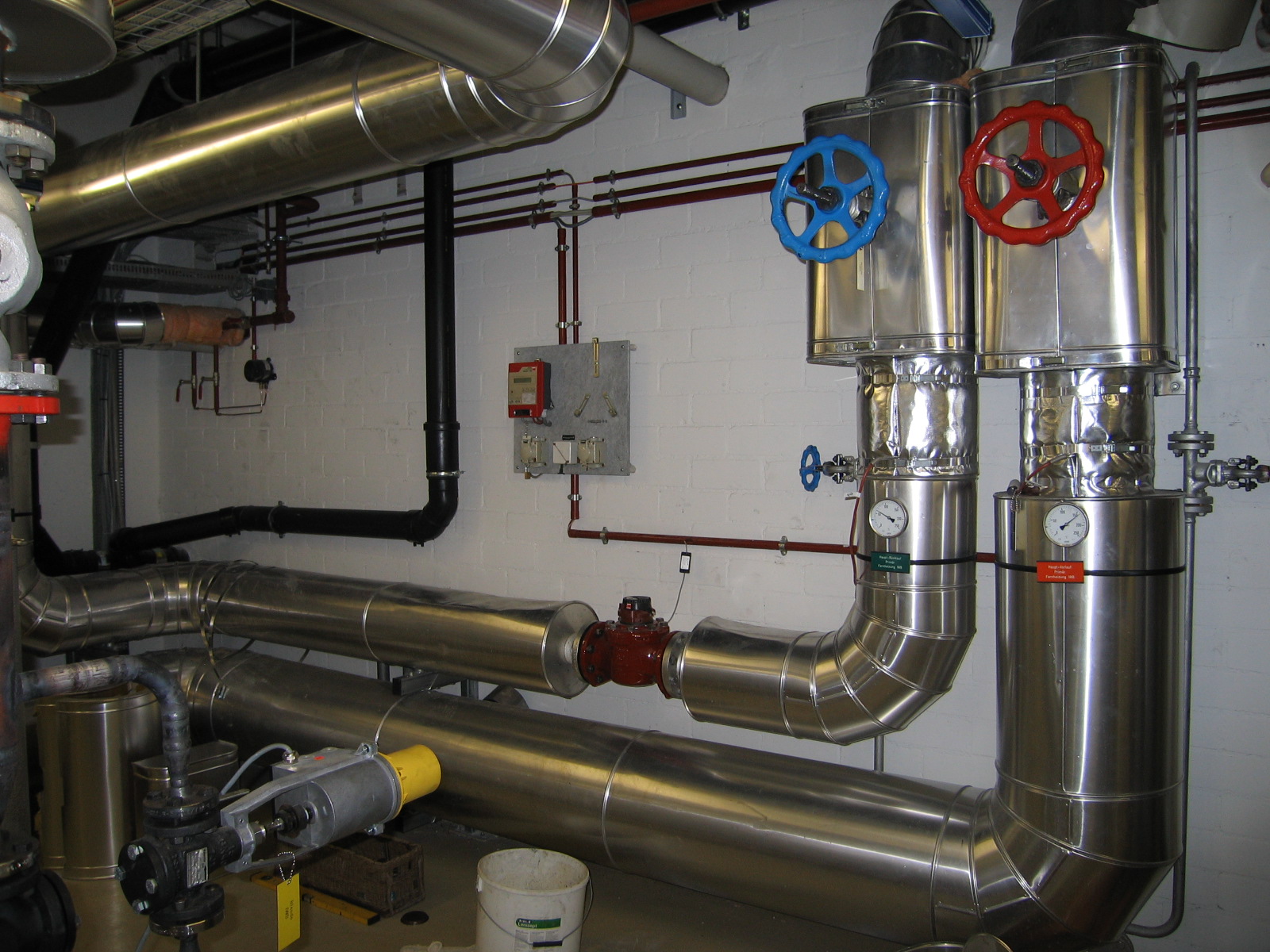Basel is hot in the city
Situated in the northern part of Switzerland at the border with Germany and France, Basel covers an area of 22.75km2 (8.8 square miles) and has a population of 189,000.
It experiences mild temperatures influenced by Mediterranean air currents, which flow along the Rhone valley through the Belfort Gap.
As a result, Basel enjoys above average sunshine compared with the Swiss midlands and only rarely experiences autumn fog. However, during winter the temperature can drop to minus 15ºC (5ºF).
As is the case in most below-freezing areas, heating systems are generally efficient and keep the populace at a comfortable temperature.
All buildings in Basel are fitted with heating systems that usually run from October to April. These systems are operated by oil, natural gas, district heating or solar. Electrical systems are banned by law as being economically unacceptable.
A district heating system is based on the principle of one or more central heating systems in which the heat is produced then delivered to different buildings through a pipe distribution system.
Each building connected to the system is fitted with a heat exchanger for space heating, production of hot water or, where appropriate, for steam generation.
The plants get the energy from the combustion of fuel such as coal, oil, gas, timber, sludge or rubbish – or even from geothermal sources. In the beginning, district heating boilers were also powered by surplus electricity.
In Basel, district heat is supplied through a pipe distribution system in which the water is heated to 180ºC (356ºF) and is under a pressure of 15-18 bars (218-261psi). The return water is at 80-120ºC (176-248ºF).
The first district heating distribution systems in Switzerland were built in big cities in conjunction with rubbish-burning plants.
Zurich, the largest city in Switzerland, started in 1928 with the construction of the first district heating system. In 1942 Basel also started building a district heating system, especially serving public buildings such as hospitals and government buildings.
With the supply of district heat, Basel was able to reduce the burning of wood, oil, coal and kerosene. This was a big step in reducing air pollution. Another advantage was that the city was able to produce heat-generated electricity.
At the beginning of the 20th century Europe decided that smoke and soot from numerous furnaces was harmful for people and the environment.
The invention of district heating systems was an advantage for commercial property owners and home-owners because heating was easier, fuel did not have to be delivered to buildings, and it was no longer necessary to pick up slag and ash.
It was even possible to save space in buildings because it was not necessary to accommodate a heating system and chimneys or flues were not needed.
However, the advantages of the district heating system were felt most in times of energy crises.
Development of the district heating distribution system was given impetus by two world wars and the post-1973 oil crisis.
Before the rubbish-burning plant was built in Basel, all rubbish from the city and surroundings was sent to a landfill site.
The result was pungent smells, and people were concerned about epidemics and plagues.
In 1939 the government of Basel decided to build the first rubbish-burning plant with a capacity of 3,000 tonnes (2,952 tons) of rubbish per year. The construction cost was CHF5 million (US$4.39 million) and the plant was completed in 1942.
Today’s district heating system in Basel is the biggest in Switzerland. The network, which has three central plants, is now about 200km in length and is being extended every year.
Connected to Basel’s district heating system are 13 hospitals, 200 public buildings, 250 industrial and commercial establishments and about 45,000 homes.
In 1979 the Basel government made it compulsory for homes and commercial buildings in the district heating area to be connected to the system.
The previous rubbish-burning facility was shut down at the end of 1998 because of environmental concerns. Construction of today’s rubbish-burning plant was finished early in 1999 and its annual capacity is 190,000 tonnes (187,000 tons) of rubbish.
Industrial and domestic rubbish is collected from about 300,000 workplaces and 700,000 inhabitants. The overall efficiency (percentage of heat energy extracted) is almost 80%, probably the best in Europe.
A couple of years ago, the Basel government decided to invest more money to extend the district heating system and add another plant.
A wood-burning plant is scheduled to be completed late in 2008 to supply heat for up to 6,000 households. The plant is next to the rubbish-burning plant so that the infrastructure can be used for wood delivery.
Another big project is the construction of a geothermal plant in an industrial area of the city. Geothermal energy will heat water to increase the district heating system’s output and produce electricity.
Test drillings for the plant were conducted in 2006 and the results were promising. Unfortunately, a trial phase of pumping water into the ground to expand crevices caused a minor earthquake and all construction work was stopped for an indefinite period.
A district heating system is an energy-efficient and environmentally friendly system. Combined with a rubbish-burning plant, it helps a city to reduce harmful air pollution from individual furnaces.
In addition, concerns about epidemics and plagues are eliminated, because rubbish no longer goes into landfills.

